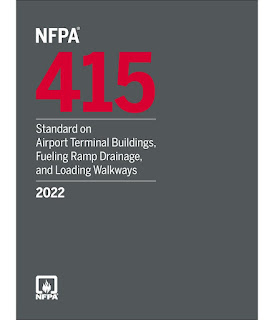"NFPA 30A in Action: Ensuring Safety in Fuel Stations and Auto Repair Shops"
- Get link
- X
- Other Apps
The National Fire Protection Association (NFPA) 30A, titled Code for Motor Fuel Dispensing Facilities and Repair Garages, is a vital safety code that governs the design, construction, and operation of facilities involved in the dispensing of motor fuels and the maintenance or repair of motor vehicles. It plays a critical role in preventing fires, explosions, and hazardous incidents at fuel stations and automotive repair garages, where flammable liquids and vapors are commonly present.
NFPA 30, which covers the broader regulations for flammable and combustible liquids. While NFPA 30 sets the general framework, NFPA 30A focuses specifically on the unique hazards associated with fuel dispensing and vehicle maintenance. It applies to a wide range of facilities, including public gas stations, private fueling operations, fleet vehicle maintenance garages, and convenience stores with fuel pumps.
One of the central features of NFPA 30A is its detailed requirements for fuel dispensing systems. This includes specifications for aboveground and underground storage tanks, piping systems, emergency shutoff valves, and leak detection systems. The code ensures that fuel systems are designed to contain spills, resist fire exposure, and allow for rapid emergency response. For instance, NFPA 30A mandates that emergency shutoff controls be clearly marked and easily accessible in case of a fuel leak or fire.
The code also addresses ventilation requirements in areas where flammable vapors may accumulate, such as enclosed service bays and garages. Adequate ventilation is crucial in preventing the buildup of explosive vapor-air mixtures, which can lead to catastrophic fires if ignited. Additionally, electrical equipment used in these facilities must meet specific standards to prevent sparks or overheating that could ignite fuel vapors.
NFPA 30A also outlines fire protection and safety systems, such as the use of fire extinguishers, signage, and the safe storage of hazardous materials. Facilities must ensure clear emergency exit routes and provide training to personnel on fire safety procedures. In repair garages, particular attention is given to the handling of fuel tanks during vehicle maintenance and the prevention of fuel spillage during repairs.
A key component of NFPA 30A is facility classification—separating areas based on the degree of hazard present. For example, different rules apply to open-air fueling stations versus enclosed repair garages, due to the varying levels of ventilation and fire risk. This classification helps determine the appropriate types of equipment, structural materials, and operational controls required for each setting.
By adhering to NFPA 30A, owners and operators of fueling stations and vehicle repair facilities can significantly reduce the risk of fire and ensure the safety of personnel, customers, and surrounding properties. It also helps facilities comply with local fire codes and insurance requirements, reinforcing overall operational safety.
In summary, NFPA 30A is a crucial code that promotes safe practices in environments where flammable liquids are present. Understanding and implementing its guidelines not only protects life and property but also ensures regulatory compliance and fosters a culture of safety within the fuel and automotive service industries.
- Get link
- X
- Other Apps




Comments
Post a Comment